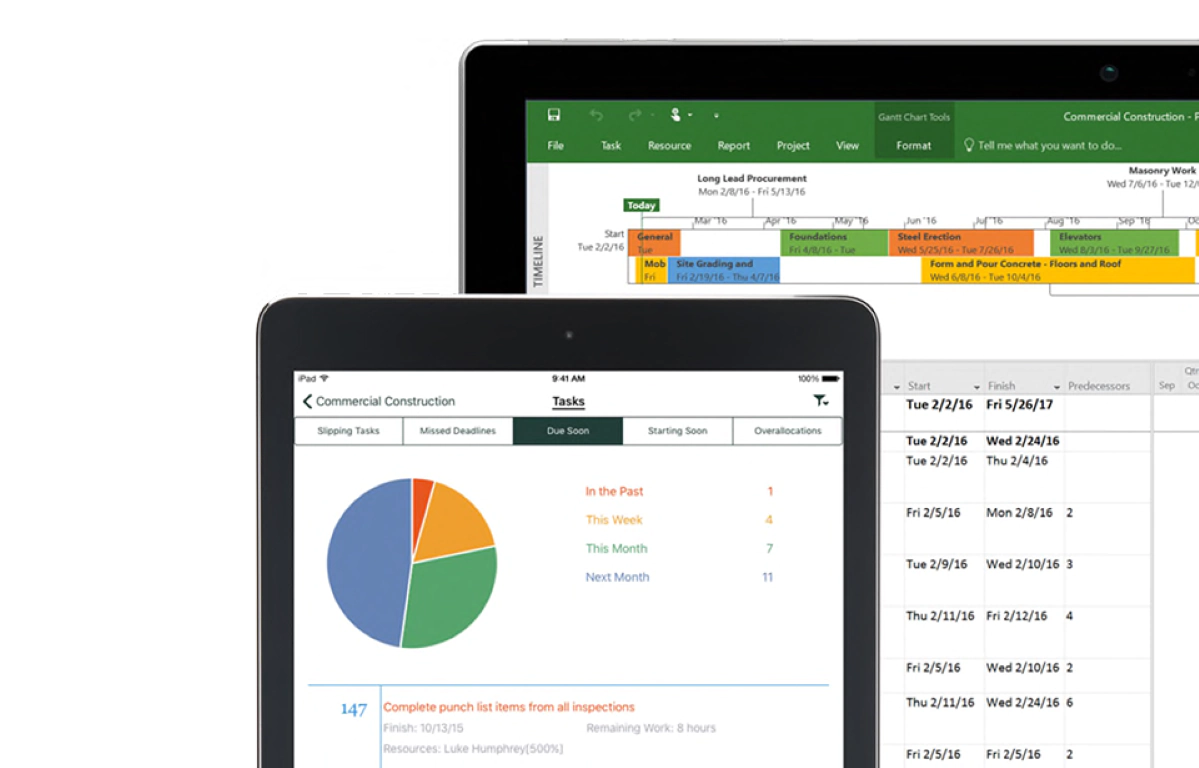Team collaboration is a crucial ingredient in the success of a project. Whether your company uses work-from-home practice or in-site, team collaboration should always be observed.
In a study conducted by Stanford, they have found out that people who collaborate with others have 64% more chances to work on a task rather than a person who works alone. Furthermore, the participants have reported that they feel less tired and more engaged in their work. If this is the case, then businesses must focus on fueling team collaboration at work.
However, working with others doesn’t necessarily shout out a collaborative workplace. Sometimes people can work in a group but don’t communicate well or they argue on what can work for a project.
When it comes to team collaboration, it must positively impact the project, employees, and the business.
As companies continue to grow and tasks become more complex, businesses need to adapt to changes. They need something that will support the success of a project and that’s by making team collaboration possible.
Now, effective team collaboration can happen with the help of technology. The presence of technology has bridged the gap that traditional methods of collaboration lack. It became possible for each team member to accomplish tasks, communicate, and work simultaneously on a project.
Collaboration entails different levels of approach that have been changing quickly and technology has found ways to manage these changes. The use of collaborative tools is now beneficial to the success of a project and teamwork. It has made it possible to work on complex tasks by simplifying them.
It is important to remember that collaboration is not only about working in a group. Collaboration can also mean working with a client or a remote worker.
Team Collaboration Challenges
Working with others or in a team is challenging, and collaboration can work smoothly, or sometimes it doesn’t at all. There are challenges when it comes to team collaboration and knowing them can help you address them with the appropriate technology, tool, or strategy.
Flawless Communication Difficulties
It’s critical for businesses to foster a workplace culture of openness. When team members do not feel comfortable communicating openly or there is no consistent platform where all team members may share their thoughts and ideas, collaboration can be hampered.
When teams do not communicate with one another, it can lead to the failure of a project.
Unclear Goal
It’s challenging for teams to strive with an unclear objective. Team members may work aimlessly if they don’t have a clear image of what needs to be done in the end, which will stifle productivity, motivation, and efficiency.
Leaders may find it challenging to delegate responsibilities and tasks to each team member if there is no specified purpose. As a result, negative feelings towards a project may develop, and work synergy may suffer. When employees aren’t provided with key performance indicators to track or don’t understand what the rest of the team is doing to contribute to the project’s success, they are more likely to be hostile to collaboration.
Fostering Trust
Trust in team collaboration is important. It helps each member be comfortable to reach out and communicate, work on tasks assigned to them, and share ideas that are necessary.
However, if team members do not trust their leader or one another, they refuse to share with the team or communicate with them.
Negative Mindset

If a task or project is complex, and it causes more stress to your team, it can lead to a negative mindset. They will find it inconvenient and painstaking to work on it. Hence, the result becomes less than what is expected. There can even be delays and miscommunications.
Undistributed Task
A team is always composed of members with great minds and each with unique capabilities. However, a project can fail because there can be plenty of members working on one task or there are many decision-makers in a project that can do more harm than good. An undistributed task can affect the goal of a project and cause delays.
Lack of Productivity

One of the most significant barriers to productivity in the workplace is a lack of feedback. Team members frequently require recognition or evaluation of their efforts and performance.
Using standard communication techniques, such as e-mail, is another stumbling block. It may take some time for key people to respond to e-mail messages, which might cause major delays in the process.
Infrastructure that is Insufficient
Collaboration is stifled by complexity. The range of tools used to execute a job is one cause of complexity. To cooperate effectively, the team needs the correct tools, and each member must be comfortable with them.
Employee Resistance
Some employees like to work alone, while others prefer traditional methods. Working alone is not an issue if that’s how your employee can improve their productivity. However, there are some tasks that require collaboration. If members resist collaborating with others, it can be a difficult situation.
Another issue with collaboration is the use of traditional methods. Nowadays, businesses have to handle plenty of data that needs the latest technology and methods but some employees resist adapting to these new practices. This can put your business data at risk.
These collaboration challenges are what cause teams to work together towards a single goal and they can cause delays in the project. However, there are solutions to these problems. With the power of technology, businesses can help their teams focus on positive collaboration.
How Can Technology Help in Team Collaboration?
Better than Email
Email is still used as a form of communication or even marketing, and it is a beneficial tool for conducting business. However, when it comes to working on projects that require collaboration on a document, using email is not the best option.
Fortunately, cloud developers were able to come up with a real-time and collaboration-friendly setup for teams. Cloud collaboration can be a more powerful collaboration alternative. Anyone with a link can access, comment on, edit, update, or otherwise contribute to an electronic document stored in the cloud. Specific users’ access privileges can be changed so that they can only view the document and not edit it, only comment on it, or completely change it.
Some of the most popular collaboration software programs that have real-time editing are Google Workspace or Microsoft Office 365. Even the cloud storage Dropbox now offers Dropbox Paper, a type of document designed for real-time collaboration, assigning tasks, and more.
Manages Projects and Tasks
Another benefit a business gets from technology is it helps team collaborations by managing projects and distributed tasks.
Project management software like Microsoft Project Professional can help keep track of tasks assigned, due dates, and project resources. Furthermore, it facilitates better communication around group members for them to check on the progress of the other.
Build Relationships Through Social Media
Unlike in-person meetings where employees can have lunch together or attend events together, online workers take another way to approach socializing.
With the help of social media, companies can create private groups online where employees can talk whether about work ideas or outside work conversations.
By having a more relaxed work environment and fostering relationships with your team members, it would be easy to work together on projects or ideas.
Improves Communication
Communication is important in team collaboration. Without proper communication, it would be difficult to delegate tasks, understand instructions, and have lots of unwanted results. However, technology has made collaboration easy by providing effective communication tools that are more than sending a message or having a call.
Tools like Slack, Zoom, Microsoft Teams, and Skype for Business are some great examples of communication tools that teams can use. It allows instant messages, video and audio calls, sharing of files, creating groups, sharing screens for presentation, and private messaging.
Communication tools like this can allow team members to reach out to one another when they need help. They can see if another member is online or they can explain a task easily.
Boost Productivity

Employers may boost employee engagement and inspire people to outperform themselves by implementing cutting-edge technologies.
Employees can provide real-time feedback to companies. This makes them feel more important and encourages them to speak up.
Employee motivation can also be aided by knowledge sharing. A recent study indicated that organizations that encourage collaborative working are 5 times more likely to be good performers.
Training
It is not commonly mentioned, but training is a great way to improve collaboration.
When technology is used with training sessions, it can help improve teamwork, get rid of outdated techniques, and stimulate employees to learn and improve skills.
For example, you can use augmented reality as part of a training session. It can give employees some real-life experience and stimulate them to learn more. In addition, technology can make training possible for remote teams too.
Speeds Up the Production Process
When employees work together, it can result in accomplishing tasks faster and better. When using technology in team projects, employees can fast track the approach to their tasks, hence turning ideas into reality before the deadline.
Technology can get rid of unnecessary hindrances during the project process, solve problems faster, and provide open communication between team members. Faster project completion is rewarding for businesses.
Conclusion
Team collaboration is an essential part of every business’s success. But as a task becomes complicated and the work practices changes, the need to adapt to technology is crucial.
Technology solves problems in a collaboration that businesses encounter in the workplace. It improves productivity and makes communication better. In addition, technology has hastened the work process with higher quality and even boosted the morale of team members.




